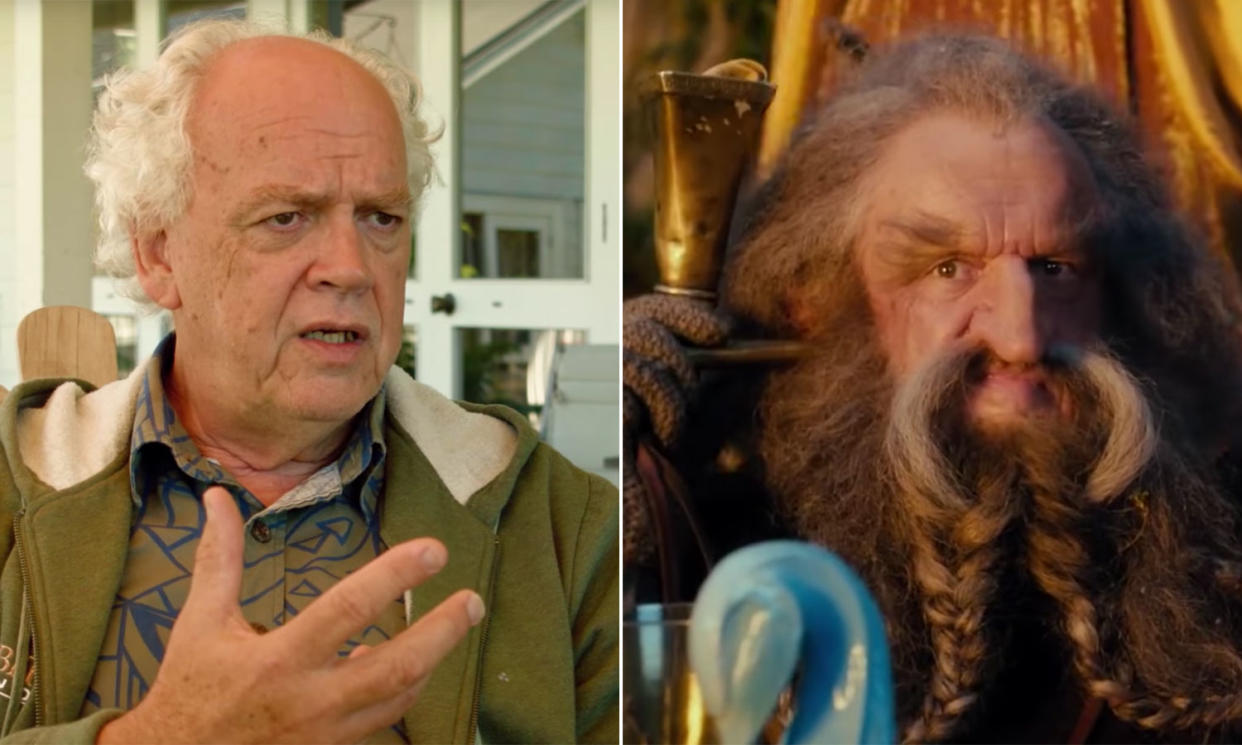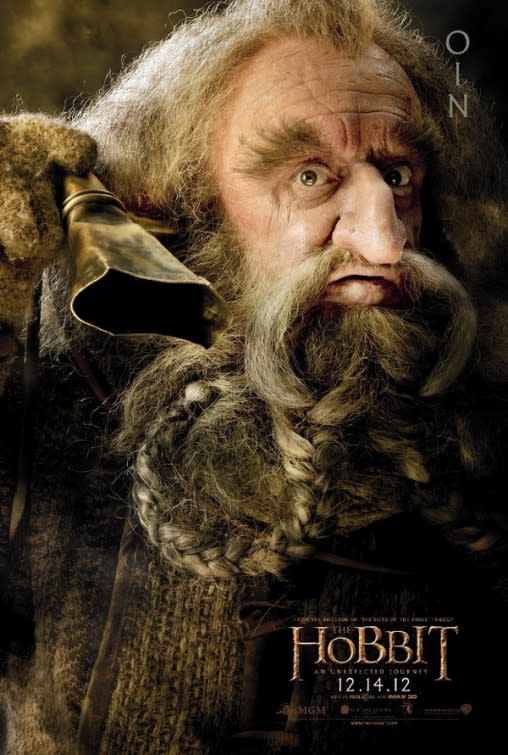The Hobbit actor says the films became 'a big punch up, driven by technology' after studio interference

John Callen, the New Zealand actor who played the dwarf Oin in theThe Hobbit trilogy, has expressed disappointment that many of the core cast of Peter Jackson’s Lord of the Rings prequels were treated like “the world’s highest-paid extras”.
He also thinks the dwarves were sidelined in favour of “punch ups” and CGI-heavy battles.
Speaking to YouTuber Lindsay Ellis for The Hobbit: Battle of Five Studios, a two-part documentary about the behind-the-scenes struggles of The Hobbit, Callen speaks candidly about how studio demands diluted the original vision for the films, which began life as a two-part Guillermo del Toro project.
The cast, headed up by Martin Freeman as hobbit Bilbo Baggins and Ian McKellen as the wizard Gandalf, headed to New Zealand to shoot two films back-to-back in 2011, with Peter Jackson now directing after del Toro left the project in 2010.
Callen was one of the 12 dwarves that Bilbo would accompany on their mission to recover treasure from the dragon on Lonely Mountain and, as anyone who’s read Tolkien’s source book would know, The Hobbit is really the dwarves’ story.
“We kicked off [filming] with tremendous enthusiasm, a real sense of brotherhood, camaraderie, and everybody working together,” explains Callen, in the full video that you can watch below.
“There wasn’t one tosspot person in the core cast. We really had a tremendous sense of brotherhood, of multiple different characters coming together for a single and very important purpose, and there was a determination within the cast that we would be a band of brothers basically.”
However, with Peter Jackson picking up the pieces after del Toro’s departure, and with Warner Bros., New Line, and MGM all involved in production, it quickly became clear to Callen that things would not run smoothly on set.
“It’s a very common expression that the film industry is run on the motto ‘hurry up and wait’, and there was more of that on this production than any other production that I have worked on,” Callen explains.
“We’d go through make up and prosthetics, get ready and then wait. And wait. And wait.”
Some days, he says, the actors would go through hours of make up and prosthetics but end the day having not appeared in a single shot. He says this was partly because Jackson hadn’t had sufficient time to prep the shoot, but also because the studios were exerting a lot of control, demanding changes to the story, some of which, he felt didn’t really fit the original vision.

In July 2012, after wrapping the initial 266-day two-film shoot, Peter Jackson announced that The Hobbit would now be released as three films. Another 10 weeks of filming was scheduled for May 2013 just months before the December release of the first film An Unexpected Journey, and Callen suggests many of the new scenes added came from suggestions by the studios involved.
“[The studios] may, for instance, have wanted less of the story of the dwarves with the hobbit, and more the story of the punch ups and the fights, the battles. The idea of having a love story in there, which wasn’t in the book. Whether one thinks that was well thought out or not.”
With some of the dwarves having their roles beefed up, including – we’re guessing – Aidan Turner’s Kili, who now had a love story with Evangeline Lilly’s Tauriel to service, some of the Thorin’s troop ended up being sidelined.

“We got left behind a bit. How much that was based on what was originally intended, I’m not sure, because we didn’t initially have complete scripts for three films, because initially there were going to be only two films. All I can tell you is that there was a definite feeling within the core cast that Peter [Jackson] was, if you like, he wasn’t the final arbiter.
“Even though we were in the core cast we really did feel at some point that we were actually becoming the world’s highest-paid extras.”

“Whether it had to do with the fact that the studios said, ‘actually, they’re all right, these dwarves, yes, but the real stories are the battles between Thorin and the evil orcs. It’s the story about the relationship between Radagast and Gandalf, and finding Galadriel again, and getting her help.’
“If that is what the studios were pushing for, then they certainly got what they wanted. What I think they missed out on was the heart that we started with. And we had that as a group of dwarves going with Gandalf and with our hobbit to find our treasure.
“The treasure, like in the Maori language “taonga”, has to do with the treasure of people, of history, and really, of heritage. That’s what we were after.
“That’s what we, as actors, were driving towards, and that I felt gradually dissipated, until at the end we just had a big punch up with five massive armies, driven by technology.”
The Hobbit trilogy, while not as critically well received as The Lord of the Rings trilogy, still cleaned up at the box office. Only The Lord of the Rings: The Return of the King, the concluding part of the original trilogy, grossed more at the box office than any of the The Hobbit films, according to Box Office Mojo.
The problems behind the scenes of The Hobbit are well documented, with Peter Jackson admitting in a DVD extra that he was often “winging it” on set.
“I spent so much of The Hobbit feeling like I was not on top of it,” Jackson said, “The fact that I’d had not much prep, and I was making it up as I went along.”
Watch the first part of Lindsay Ellis’s brilliant The Hobbit doc below.
Read more
Tolkien estate settles Hobbit lawsuit
Mind-blowing movie details you might have missed
Amazon’s LOTR show is costing a FORTUNE

 Yahoo Movies
Yahoo Movies 

